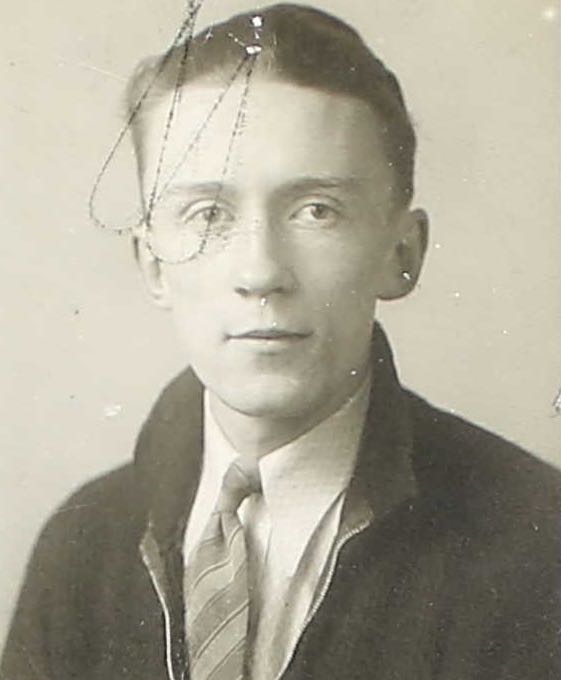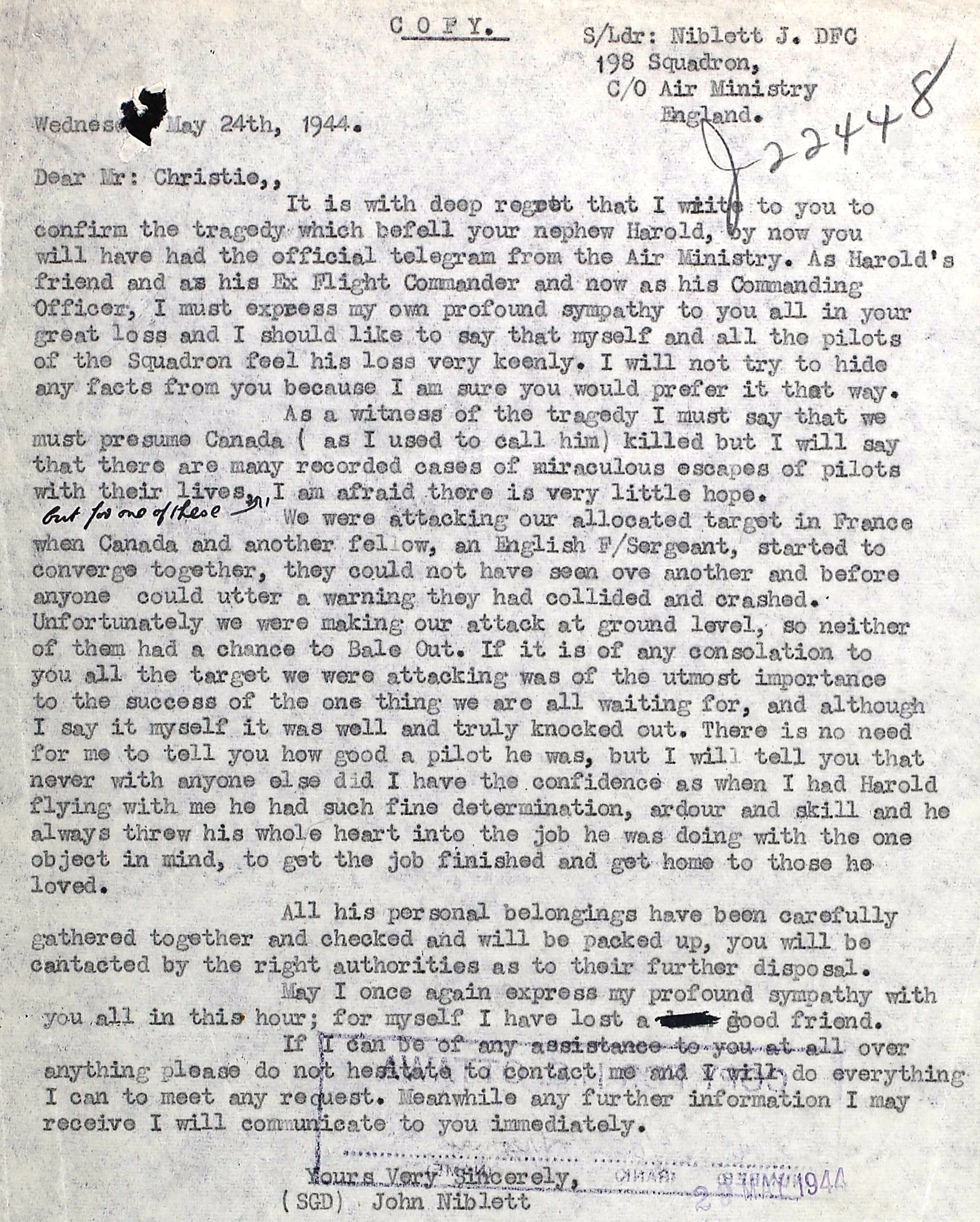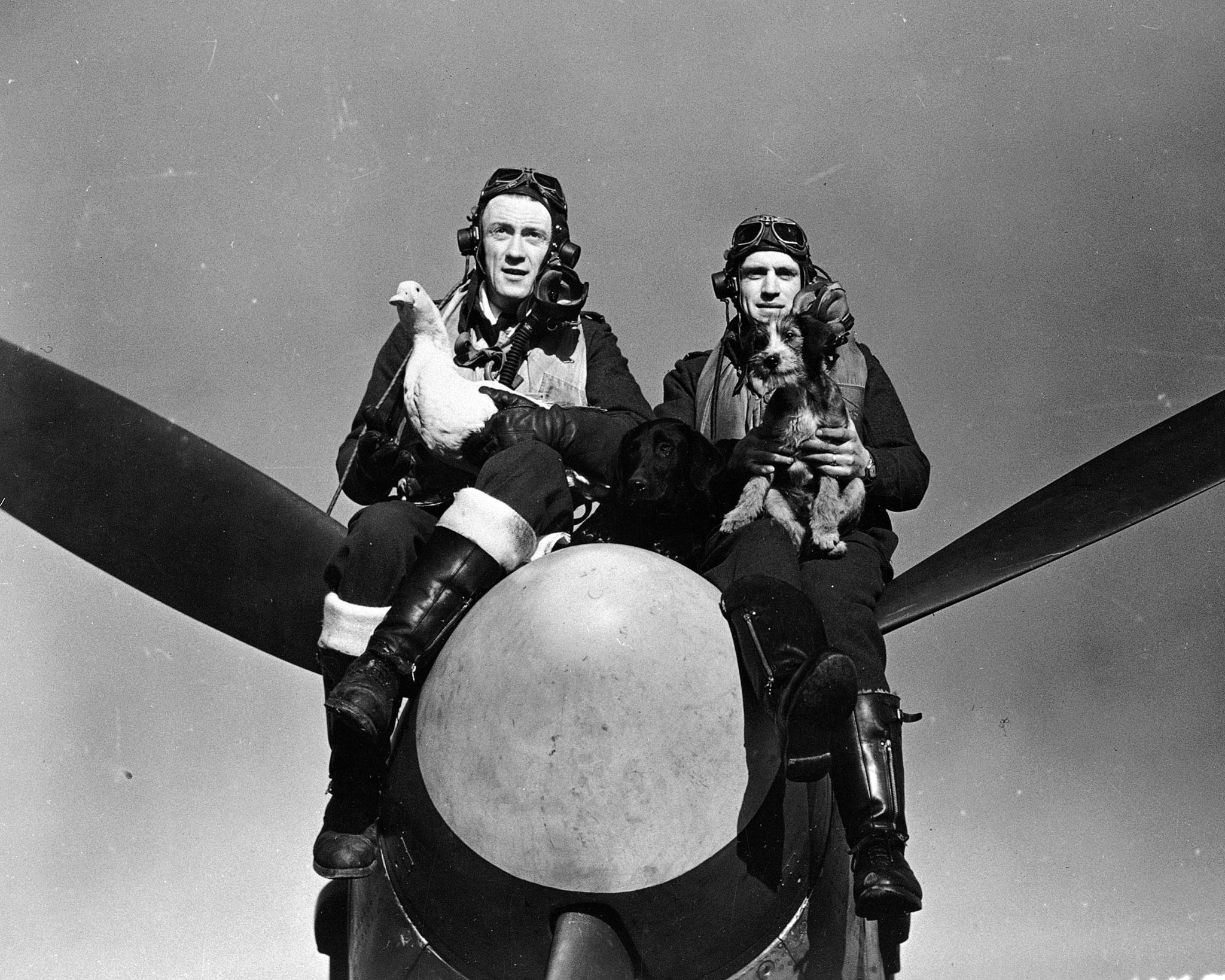



December 14, 1917 - June 24, 1944




Harold Freeman was born in Vestfold, Manitoba to Ada Susan Freeman, of Winnipeg. He was an only child. His mother wrote that her son was born on December 14, 1917 on one form, but Harold wrote the 13th on many others. He also 'couldn't say' about his father. On another form, his father's name was noted as Mathew Johnson, deceased, born in Iceland, of British citizenship.
"I was asked whether I had legally adopted the name of Freeman, insofar as my father's name was Johnson. I was adopted at birth by my late maternal grandfather, Arni [and Elizabeth J.] Freeman, at Vestfeld, Manitoba and took his name," wrote Sgt. Freeman on April 18, 1941. His birth certificate read "Heraldur Freeman".
Freeman worked at Holt Renfrew for one year in Winnipeg during 1936-1937. "Business was slack," so he worked as a stores clerk for Manitoba Bridge and Iron Works prior to enlistment, for 2 1/2 years, in Winnipeg. He had hope to travel after the war and then get into civil aviation/transport.
He applied to the RCAF in December 1939. In January 1940, in Toronto, he was assessed as fit and underweight. He stood 5'11" tall and weighed 142 pounds. He indicated he liked hockey, football, soccer, TENNIS, and skiing. He moved to Toronto and was a salesman with Agnew Surpass Shoes Stores.
By April 1940, his journey through the BCATP began.
At No. 1 EFTS (Winnipeg Flying Club): "Progress about normal; had some difficulty with landings, but overcame this OK. Lets airspeed vary too much, especially on forced landings. Instrument flying and aerobatics average." Ground Training: "Easy going, almost to the point of laziness. Of average ability on ground subjects but doesn't study enough Will probably be late for appointents, if he isn't checked closely."
At No. 1 SFTS: July 22, 1940 - September 17, 1940: "Good average pupil. Weak in forced landings." Ground Training: "Satisfactory. Worked steadily. Suitable as an NCO. Dependable, neat appearance, eager to learn." By November, he was "a good organizer. Initiative good."In January 1941, he completed a Flying Instructor's course at Trenton. "General flying needs more polish. Inclined to appear careless. Recommend "C" cat." "Average pilot, not a very strong voice. Inclined to be casual about his flying. Weak on aerobatics in Harvard. Knows patter well.
In April 1942, at No. 2 EFTS: "Average clear hood, low average on instruments. An average instructor who must practice instrument lying and improve technical knowledge."
Six times he was written up on a General Conduct Sheet. 1. Failing to appear at the place of parade. He was remanded severely at No. 6 3. EFTS Dunnville, Ontario on June 2, 1941. 2. Absenting himself without leave. Remanded to CO; automatic forfeiture of pay 5 days, September 13, 1941. Dunnville, Ontario. 3. Conduct to the prejudice of good order and Air Force Discipline. October 24, 1942. No 1 Y Depot, Halifax. Reprimand. 4. Absent himself without leave from working parade. December 26, 1942. Forfeiture of two days pay. Severe reprimand. 5. Certified no further entry. January 5, 1943. 6. Certified no further entry. January 10, 1943.
At Rockcliffe, February 1942, he was assessed as superior in his trade proficiency and very good in character. "A high average pilot with an excellent record. A good type who should do well on Operations." In October 1942, he was assessed: "A high average pilot. Should do well on Operational duties." He was sent overseas in November 1942.
January 1, 1943 to March 2, 1943, he was at No. 55 OTU: "Good average pilot, formation very steady, discipline needs watching at time, but when he knuckles down, is a keen type." He was sent to 198 Squadron.
In May 1944, Freeman's aunt and uncle received a letter from S/L Nesbitt about Harold's death. "As Harold's friend and as his ex-Flight Commander, and now as his Commanding Officer, I must express my own profound sympathy to you all in your great loss and I should like to say that myself and all the pilots of the Squadron feel his loss very keenly. I will not try to hide any facts fro you because I am sure you would prefer it that way. As a witness to the tragedy, I must say that we must presume Canada (as I used to call him) killed, but I will say that there are many recorded cases of miraculous escapes of pilots with their lives, fut for one of these, I am afraid there is very little hope. We were attacking our allocated target in France when Canada and another fellow, an English F/S, started to converge together, they could not have seen over another and before anyone could utter a warning, they had collided and crashed. Unfortunately, we were making our attack at ground level, so neither of them had a chance to bale out. If it is of any consolation to you, all the target we were attacking was of the utmpost importance to the success of the one thing we are all waiting for, and although I say it myself, it was well and truly knocked out. There is no need for me to tell you how good a pilot he was, but I will tell you that never with anyone else did I have the confidence as when I had Harold flying with me. He had such fine determination, ardour, and skill and he always threw his whole heart into the job he was doing with the one object in mind, to get the job finished and get home to those he loved."
There was discussion about Freeman receiving the VC. He was mentioned in despatches in the London Gazette, January 1, 1945, but no citation. More about Fremman can be found in
PL-26471 UK-7257 06/01/44 RAF Typhoon Fighter SQN Nearly every squadron has a mascot and the RAF Typhoon Fighter unit to which Flying Officers Hal Freeman, left, of Winnipeg, and Cliff Abbott of Edmonton, are attached is no exception. In fact, it has three - Donald the Duck, Satan the retriever and Nicky the "Heinz"pup. Trouble is, the pilots report, there's continual dissension in mascot ranks with Donald invariably getting in the last "quack".
LINKS: